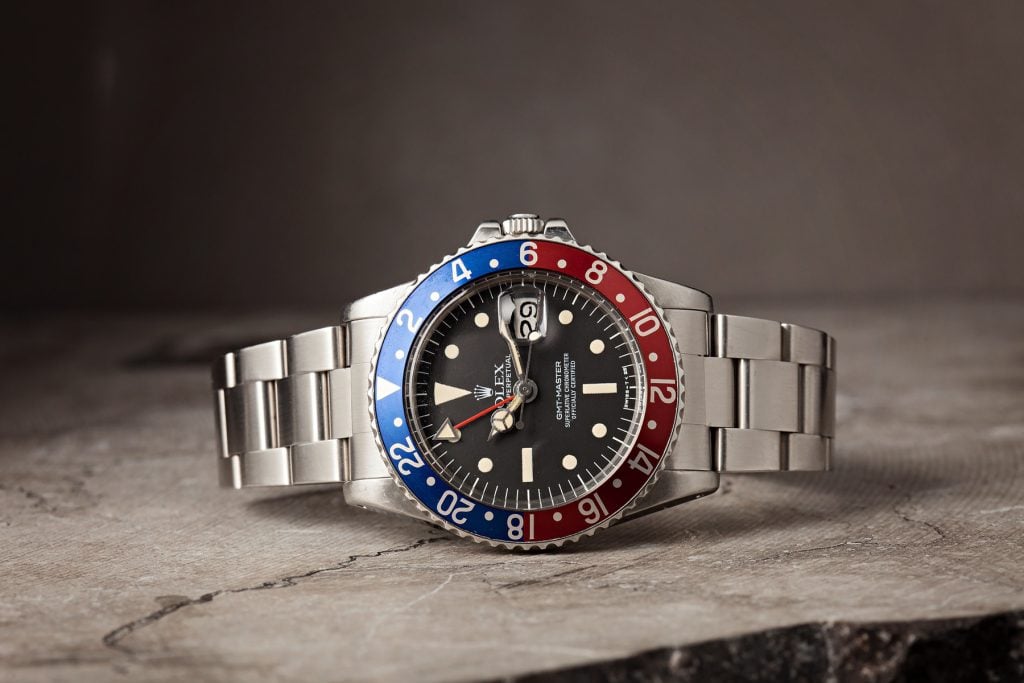The Rolex GMT-Master as we know it today began to take shape with reference 1675. So much so that many die-hard GMT fans consider it one of the most significant editions of the GMT-Master ever created because it introduced us to many of the GMT-Master’s staple features, including the standard 40mm case and Rolex’s signature crown guards.
The watch was so successful that it remained in production for over twenty years, during which the brand released countless iterations. One of the most notable and sought-after is the Radial dial GMT-Master, which we will explore in-depth here. Read on to learn more about the Radial dial GMT’s history and features.
Click here for our Ultimate Buying Guide in the Rolex GMT-Master.
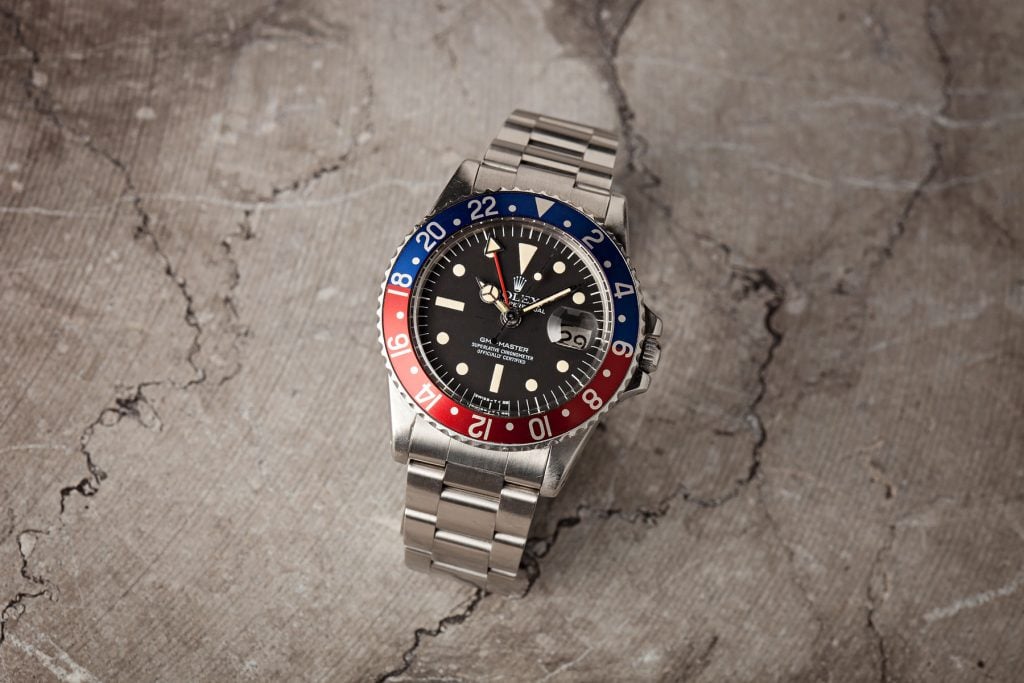
Rolex GMT-Master 1675
The 1950s produced some of Rolex’s most important models, including the Submariner, Explorer, and GMT-Master. Each model was developed for a different niche market – the Submariner was designed for divers, the Explorer for mountaineers, and the GMT-Master catered to professional pilots and other avid travelers. The famous dual-time watch came to market in 1955 with reference 6542. The first model featured the now-iconic red and blue Pepsi bezel decorated with 24-hour graduations and four centrally mounted hands. By adjusting the arrow-tipped hand, the idea was that the wearer could read local and home time at once, an invaluable tool for any avid globetrotter or successful businessman at the time. It also sported Rolex’s staple waterproof Oyster case and Perpetual movement with automatic winding technology.
As with everything Rolex does, they continued to perfect the GMT’s design, ultimately releasing ref. 1675 in 1959. The second-generation GMT-Master brought several improvements to the collection, including a slightly larger 40mm case and guards to protect the crown. It was also the first time we saw the exact wording “Superlative Chronometer Officially Certified” on the dial. Although seemingly insignificant, each of these upgrades remain staples of the GMT-Master II collection. Reference 1675 is considered by many as the foundation upon which the modern Rolex GMT as we know it today was built.
Eventually, Rolex discontinued the 4-digit GMT-Master in favor of ref. 16750, which featured a then-new caliber 3075 Perpetual movement and increased water resistance from 50 meters to 100 meters. One more iteration of the original GMT-Master would come to market, ref. 16700 in 1988, before the series was discontinued to make room for the current GMT-Master II, which notably features an independent GMT hand. Of all the original GMT-Masters, reference 1675 is easily one of the most collectible because of its place in Rolex history and varied design set options.
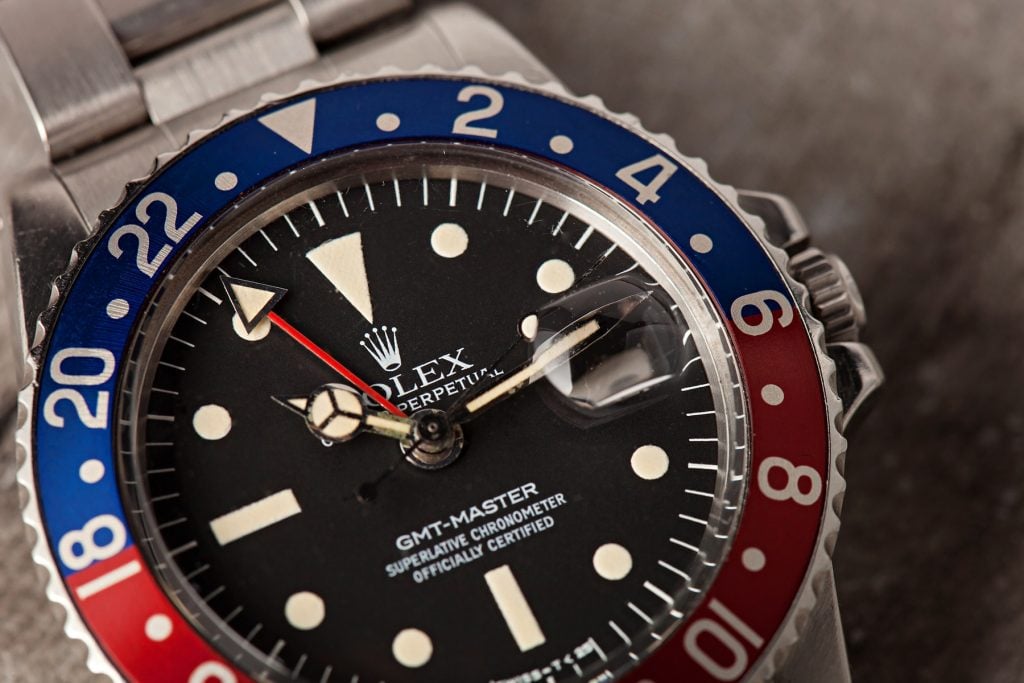
Rolex 1675 Variations
When it comes to vintage Rolex watches, even the smallest details matter, and reference 1675 has one of the most interesting selections of feature sets. The GMT-Master 1675 was a popular model that remained in production for over two decades. Several variations hit the market during that time, featuring different dials, bezels, movements, and even crown guards. Rolex also produced a two-tone and all-gold edition of ref. 1675.
Reference 1675 was produced with the famous red and black Pepsi bezel and an all-black bezel. It also featured a 3-piece link Oyster or 5-piece link Jubilee bracelet, and even the shape of the crown guards varied depending on the year produced. Examples produced until around the mid-1960s were powered by the caliber 1565 movement with a 42-hour power reserve, after which the higher-beat caliber 1575 took its place with a slightly longer 48-hour power reserve. If the watch was produced after 1971, the movement also included hacking seconds for more precise time-setting. Lastly, Rolex only made reference 1675 with an older-style acrylic crystal.
However, it’s the dial that boasts the most interesting variations. Initially, ref. 1675 featured a glossy gilt dial with gold text, followed by a matte dial with white text around the mid-1960s. From there, several additional dial variations exist, including glossy dials with or without a chapter ring and several matte dial variations categorized into different “Marks” from Mark 0 to Mark 6. The GMT showcased in this review features the rare and highly sought-after Mark 3 Radial Dial.
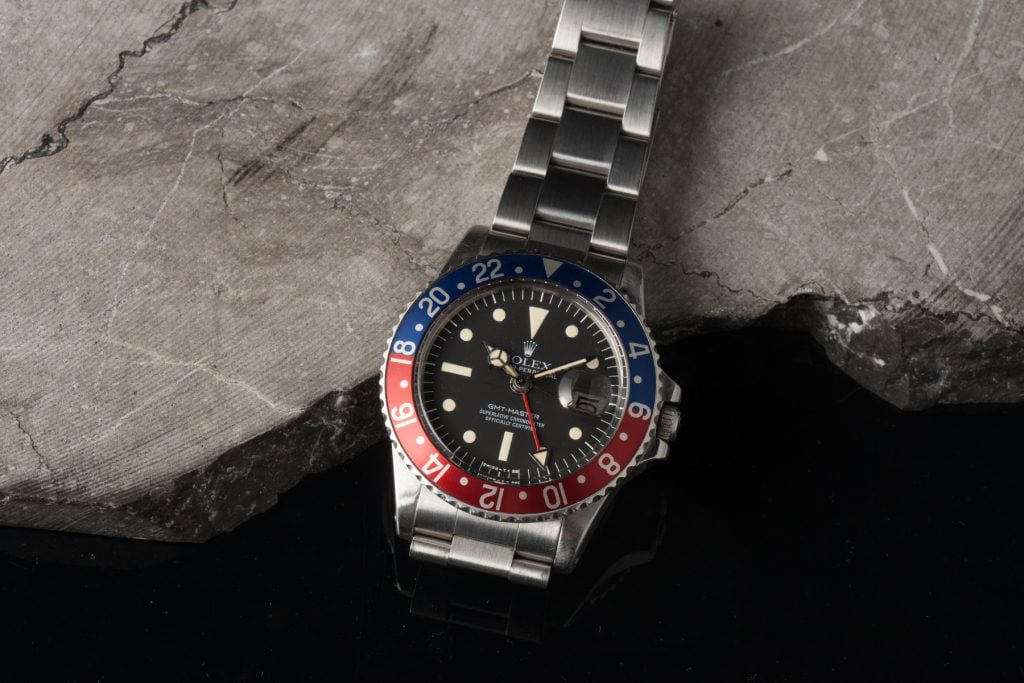
What Is The Rolex Radial Dial?
The Radial dial is distinguished by the size and position of the hour markers rather than the differences in the font like many of the other GMT 1675 Mark dials. Compared to other editions of the GMT-Master 1675, the hour markers are smaller and sit closer to the center of the dial. The Radial dial is also referred to as the “mini dial” and is among the most recognizable and desirable 1675 dial variations because it features a slightly different aesthetic than other 1675s. Looking even closer at the fine details, the font used for the GMT-Master logo appears different than the rest of the text, particularly compared to the “Superlative Chronometer Officially Certified” text, which is narrower.
Radial dials are found on GMT-Master 1675s produced from the mid to late 1970s featuring serial numbers 4.1 to 5.4 million. Rolex only produced this edition of the GMT-Master for a few years, and many of the original models were replaced by service dials much later, making the Radial dial GMT even rarer.
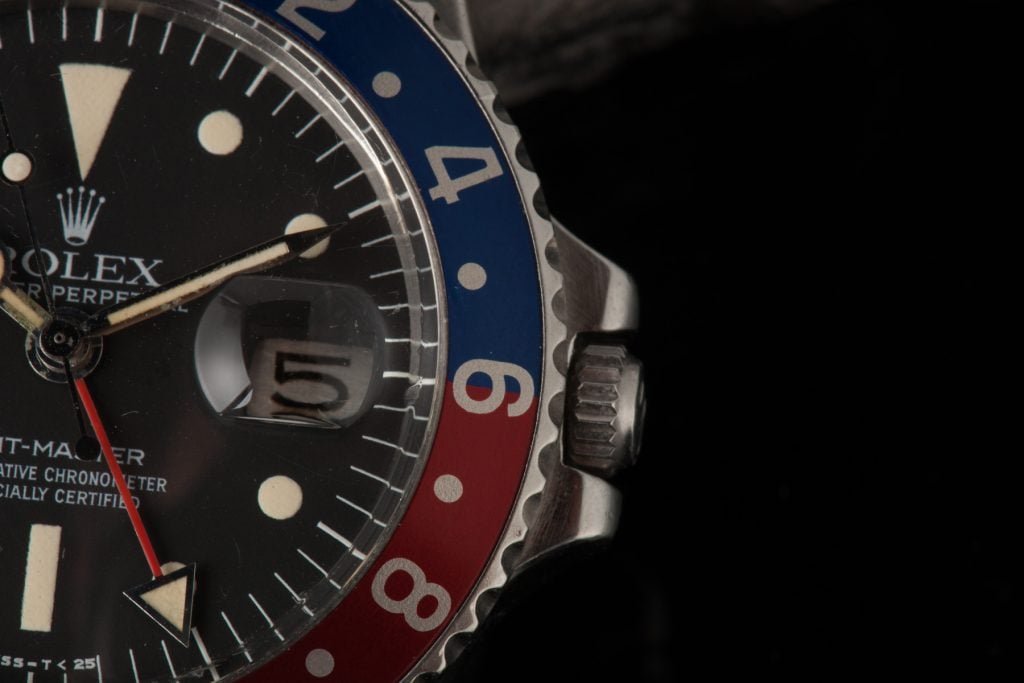
Rolex Radial Dial Price
The Radial dial typically commands a higher premium on the used Rolex market than other 1675 matte dial variations because it is so unique. Still, it’s more affordable than the older glossy gilt dial models—prices on the secondary market average between $25k and $30k. For comparison, non-radial matte dial 1675s average around $15k, while gilt dial variations typically sell for at least $30k.
If you’re in the market for a quintessential vintage GMT-Master with an exciting story to tell, it doesn’t get any better than the Mark 3 Radial dial ref. 1675. It has the retro aesthetic that many collectors are after, but with a little twist, thanks to the Radial dial. Reference 1675 also stands to hold its value pretty well because it is so rare. Really, you can’t go wrong with the radial dial GMT-Master 1675.
